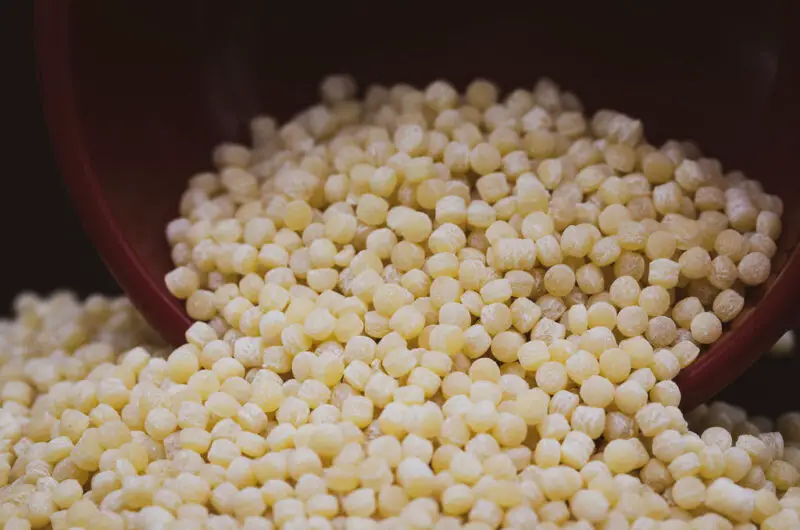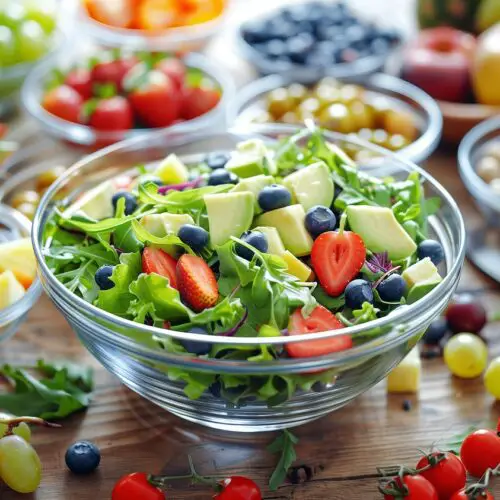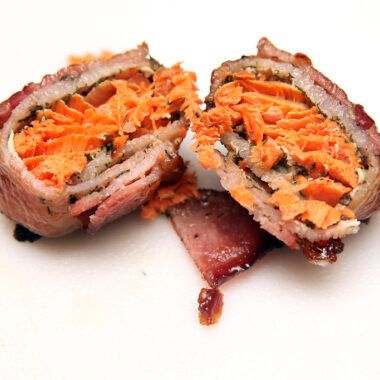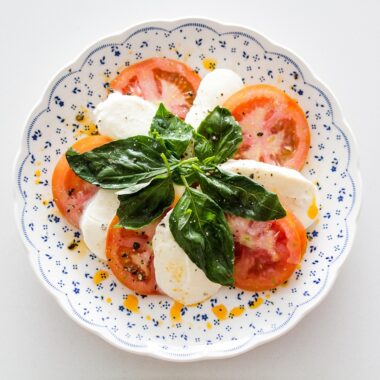Pastina, the tiniest form of pasta, holds a cherished place in Italian cuisine and hearts worldwide. This delicate pasta, often referred to as “Italian penicillin,” is a staple comfort food, especially for children and those feeling under the weather. Traditionally prepared with just a few simple ingredients, pastina is more than just a dish—it’s a warm hug in a bowl.
In this comprehensive guide, we’ll explore everything you need to know about pastina, from its history and nutritional benefits to a step-by-step recipe and variations to suit different tastes.
A Brief History of Pastina
Pastina, meaning “little pasta” in Italian, has been a beloved staple in Italian households for generations. It is one of the smallest types of pasta, typically made from durum wheat semolina flour, and is often shaped into tiny stars, dots, or other delicate forms.
This dish became especially popular among Italian grandmothers (nonnas), who would serve it to children, believing in its nourishing and healing properties. Over the years, pastina has evolved from a simple broth-based soup to a creamy, indulgent dish perfect for any occasion.
Health Benefits of Pastina
Pastina is not just comforting—it also offers some surprising health benefits:
- Easily Digestible – Because it’s small and softens quickly when cooked, pastina is gentle on the stomach, making it an excellent option for toddlers, the elderly, and those recovering from illness.
- Source of Carbohydrates – Provides energy and warmth, making it ideal for cold days or when you need a quick, nourishing meal.
- Customizable Nutritional Value – By adding ingredients like eggs, cheese, or vegetables, you can enhance its protein, vitamin, and mineral content.
Classic Pastina Recipe (Serves 2-3)
This traditional pastina recipe is creamy, buttery, and packed with comfort. It takes only 15 minutes to prepare, making it perfect for a quick meal.
Ingredients:
- 1 cup pastina (or any tiny pasta)
- 2 cups chicken broth (or water with salt)
- 1 tablespoon unsalted butter
- 1 egg (optional, for added creaminess)
- ¼ cup grated Parmesan cheese
- Salt and pepper to taste
- Optional: ½ teaspoon garlic powder or a pinch of Italian seasoning
Instructions:
- Boil the Broth – In a medium saucepan, bring the chicken broth (or salted water) to a boil.
- Cook the Pastina – Add pastina and stir occasionally to prevent sticking. Cook for about 5-6 minutes or until tender.
- Enhance the Creaminess – Reduce heat to low and add the butter, stirring until melted.
- Optional Egg Addition – If using an egg, beat it in a small bowl. Slowly pour it into the pot while stirring continuously to create a silky texture.
- Cheese Time! – Stir in the Parmesan cheese and mix well.
- Season and Serve – Add salt, pepper, and any optional seasonings. Serve warm and enjoy!
Variations of Pastina
1. Pastina with Milk (Sweet Version)
For a breakfast-style pastina, swap out the chicken broth for milk and add a teaspoon of sugar, cinnamon, and a drizzle of honey.
2. Pastina with Vegetables
Enhance the dish by adding finely chopped carrots, spinach, or peas while cooking. This is an excellent way to sneak extra nutrition into meals for kids.
3. Cheesy Pastina
For an ultra-cheesy experience, stir in 1/2 cup of shredded mozzarella or cheddar along with the Parmesan.
4. Pastina Soup
Keep the consistency thinner by adding more broth and including shredded chicken for a heartier soup-style dish.
5. Pastina with Olive Oil and Garlic
Instead of butter, use extra virgin olive oil and minced garlic for a healthier, more flavorful twist.
Pairing Pastina with Other Dishes
Though pastina is often enjoyed alone, it pairs beautifully with:
- Grilled Chicken or Fish – For a balanced meal.
- Garlic Bread – To soak up the delicious broth.
- Steamed Vegetables – Such as zucchini, mushrooms, or roasted peppers.
- Fresh Salad – A light, crisp salad complements the richness of pastina.
Tips for Cooking the Perfect Pastina
- Stir Frequently – This prevents pastina from clumping together.
- Don’t Overcook – Since pastina is tiny, it cooks quickly. Check after 4-5 minutes.
- Use High-Quality Cheese – Freshly grated Parmesan gives the best flavor.
- Customize to Taste – Feel free to experiment with different seasonings and mix-ins.
Pastina is a simple yet delicious comfort food that brings warmth and nostalgia to the table. Whether enjoyed traditionally, with cheese, or as a soup, it’s a versatile dish that can be customized for any occasion. Now that you have this ultimate guide, go ahead and cook up a bowl of this timeless Italian classic.
The Cultural Significance of Pastina
Pastina holds a special place in Italian cuisine, particularly in the hearts of Italian families. It is often one of the first solid foods given to babies and a go-to meal for those feeling under the weather. The simplicity of the dish, combined with its ability to be easily customized, has made it a staple in kitchens for generations.
In Italy, grandmothers (or nonnas) are known for preparing pastina as a cure-all remedy. It is believed to provide warmth, energy, and nourishment, much like how chicken soup is viewed in other cultures. The act of making pastina also carries sentimental value, as it is often associated with childhood memories and the love of home-cooked meals.
Beyond Italy, pastina has become popular in other parts of the world, especially among Italian-American families who have passed down their cherished recipes. Even in modern kitchens, pastina remains a go-to comfort food, proving that sometimes, the simplest dishes are the most meaningful.
Nutritional Breakdown of Pastina
While pastina is mainly composed of carbohydrates, its nutritional value can be enhanced depending on how it is prepared. Below is a general breakdown of the classic pastina recipe per serving:
| Nutrient | Amount (Per Serving) |
|---|---|
| Calories | 250-300 kcal |
| Carbohydrates | 40g |
| Protein | 8-10g (with egg/cheese) |
| Fats | 8-12g |
| Fiber | 2g |
| Calcium | 10-15% DV (with cheese) |
How to Make Pastina Healthier
If you want to boost the nutritional value of pastina, consider the following:
- Use Whole Wheat Pastina – This increases fiber content and provides a more complex carbohydrate source.
- Add Lean Protein – Mix in shredded chicken, turkey, or tofu for extra protein.
- Include Vegetables – Carrots, spinach, zucchini, or mushrooms can provide vitamins and minerals.
- Opt for Low-Sodium Broth – This reduces overall salt intake while keeping the dish flavorful.
- Use Healthy Fats – Substitute butter with olive oil or a small amount of coconut oil for a heart-friendly option.
How to Store and Reheat Pastina
Storing Leftovers
If you have leftover pastina, you can store it for future meals.
- Refrigeration: Store cooked pastina in an airtight container for up to 3 days.
- Freezing: If you plan to keep it longer, store in a freezer-safe container for up to 2 months. However, pastina may absorb liquid and become mushy when thawed.
Reheating Pastina
To restore pastina to its original creamy consistency:
- On the Stove: Add a splash of broth, water, or milk, and heat on low, stirring frequently.
- In the Microwave: Heat in 30-second intervals, stirring in between, and add liquid as needed.
Avoid overheating, as pastina can become overly soft or dry.
Creative Ways to Use Leftover Pastina
If you have extra pastina and want to try something different, here are some creative ideas:
1. Pastina Frittata
Mix pastina with beaten eggs, cheese, and herbs, then cook it in a pan to create a delicious Italian frittata.
2. Pastina Salad
Let pastina cool and toss it with chopped cucumbers, tomatoes, olives, and feta cheese for a Mediterranean-style pasta salad.
3. Baked Pastina Casserole
Mix pastina with marinara sauce, mozzarella cheese, and cooked ground beef or sausage, then bake until golden and bubbly.
4. Pastina Pancakes
Combine pastina with a bit of flour and an egg to form small pancakes, then pan-fry them for a crispy snack.
5. Pastina Pesto Bowl
Stir in fresh pesto, cherry tomatoes, and pine nuts for a quick and flavorful dish.
Pastina for Babies: A Perfect First Meal
Pastina is a great first solid food for babies, as it’s soft, easy to digest, and can be customized to meet their nutritional needs.
How to Prepare Baby-Friendly Pastina
- Cook Pastina Well – Ensure it is fully softened by boiling for an extra 1-2 minutes.
- Use Unsalted Broth or Water – Avoid too much salt in a baby’s diet.
- Add a Nutritious Mix-in – Stir in pureed vegetables (carrots, squash, or peas) or a bit of mashed avocado.
- Include Healthy Fats – A small teaspoon of olive oil or unsalted butter adds healthy fats for brain development.
- Avoid Seasonings – Skip strong spices until the baby is older.
Always check with a pediatrician before introducing new foods to a baby’s diet.
Pastina in Modern Cooking Trends
With the rise of comfort food trends, pastina has made a comeback, especially among food bloggers and social media influencers. Many chefs are reinventing pastina with gourmet twists, such as truffle-infused versions, pastina with saffron, or even vegan-friendly alternatives.
Restaurants are also incorporating pastina into their menus, serving it alongside high-end proteins like grilled salmon, braised lamb, or seared scallops. The versatility of pastina allows for both traditional and modern interpretations, making it a dish that transcends generations.
Why You Should Try Making Pastina Today
If you’ve never made pastina before, now is the perfect time to try! Here’s why:
✔ Easy and Quick – Requires only 15 minutes to prepare.
✔ Budget-Friendly – Uses simple, affordable ingredients.
✔ Comforting and Nostalgic – A warm, soothing meal that brings back childhood memories.
✔ Customizable – Can be made sweet, savory, creamy, or soupy.
✔ Great for All Ages – Enjoyed by babies, kids, adults, and seniors alike.
Whether you stick with the classic buttery Parmesan pastina or experiment with new flavors, this tiny pasta remains a timeless comfort food.
Final Thoughts
Pastina is more than just a meal—it’s an experience that connects people to tradition, family, and the simple joys of cooking. Whether served as a cozy remedy for a cold, a quick weekday meal, or an elegant side dish, pastina remains a beloved classic.
Now that you have all the knowledge and tips to make the perfect pastina, grab your ingredients and start cooking!
Buon Appetito! 🍽️


















